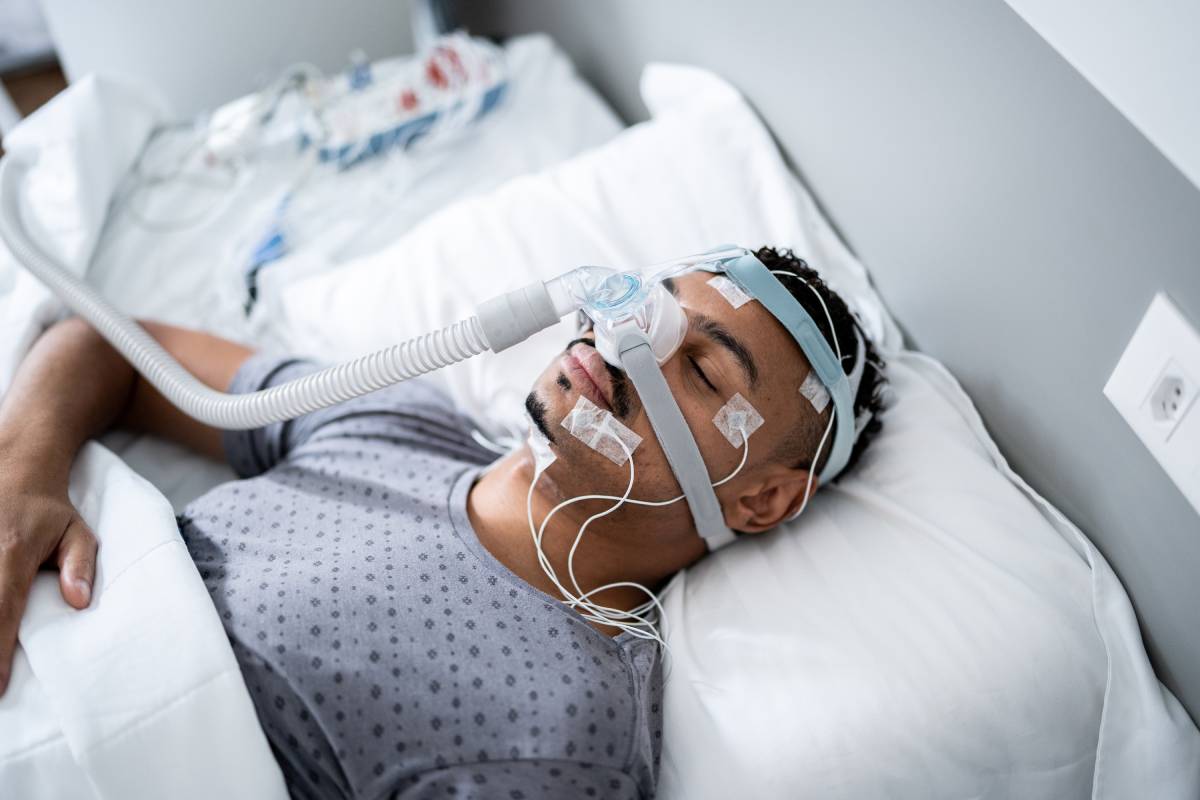PACU Care for Patients with Sleep Apnea

Post-anesthesia care for patients with obstructive sleep apnea (OSA) presents unique challenges due to an elevated risk of respiratory complications after surgery. OSA is characterized by repetitive upper airway obstruction during sleep, which results in intermittent hypoxia, fragmented sleep, and sympathetic nervous system activation. These disturbances increase perioperative risk and necessitate vigilant monitoring of patients with sleep apnea in the PACU.
Patients with OSA are particularly vulnerable to respiratory depression following surgery, primarily due to the residual effects of anesthesia and opioid analgesics, both of which exacerbate upper airway collapsibility. According to Kaw et al., respiratory failure is significantly more common in obese patients and those with sleep-related hypoventilation, particularly when OSA is present, as these conditions collectively impair ventilatory function and suppress respiratory drive (1). Consequently, the American Society of Anesthesiologists (ASA) recommends extended monitoring for these patients and avoiding systemic opioids where viable alternatives exist.
Mitigating postoperative respiratory complications in patients with obstructive sleep apnea (OSA) requires a multifaceted approach that begins with preoperative risk assessment and continues through intraoperative and postoperative care. One critical consideration for patients with sleep apnea that can influence recovery in the PACU is the selection of anesthetic agents. Wu and colleagues demonstrated that desflurane-based anesthesia was associated with a lower incidence of postoperative respiratory depression compared to propofol in patients with OSA, suggesting a more favorable and stable recovery profile (2).
Accurate respiratory monitoring is essential in PACU care of patients with obstructive sleep apnea (OSA), who are at heightened risk for hypoventilation and respiratory compromise. Traditional tools such as pulse oximetry and capnography have limitations: pulse oximetry detects oxygen desaturation only after ventilation has already declined, while capnography—though useful—can be unreliable in non-intubated, spontaneously breathing patients. The ExSpiron system offers a more precise solution. It is a noninvasive respiratory volume monitor that continuously measures minute ventilation, tidal volume, and respiratory rate using impedance-based sensors on the chest. This real-time monitoring allows clinicians to detect reductions in ventilation before oxygen saturation falls, enabling earlier intervention. In a study conducted by Holt et al., the use of ExSpiron in patients with OSA and obesity was associated with shorter PACU stays and improved detection of respiratory instability (3). By offering a more sensitive and actionable assessment of breathing effort, ExSpiron represents a significant advance in postoperative respiratory monitoring for high-risk populations.
In addition to advanced monitoring technologies, effective PACU care for patients with sleep apnea requires structured, multidisciplinary coordination. Nurses play a central role in the early identification of respiratory decline, especially when supported by targeted education and standardized protocols. Implementation of OSA-specific care pathways, including early screening, opioid-sparing strategies, and positioning interventions, has been associated with improved adherence to monitoring guidelines and a reduction in adverse respiratory events (4).
Therapeutic interventions such as the early resumption of continuous positive airway pressure (CPAP) in the PACU have also been shown to reduce the frequency of postoperative apneic episodes and oxygen desaturation. However, appropriate timing and patient selection are critical, as CPAP may cause discomfort or adverse effects such as gastric insufflation if used prematurely (1). When properly managed, CPAP serves as a vital adjunct to ventilation support in patients with OSA recovering from anesthesia.
Taken together, optimal PACU management of OSA patients requires an integrated approach that combines individualized anesthetic plans, advanced respiratory monitoring such as ExSpiron, standardized nursing interventions, and timely therapeutic strategies like CPAP. As perioperative teams adopt evidence-based protocols, they are better positioned to improve safety outcomes and reduce complications in this high-risk surgical population.
References
- Kaw R, Wong J, Mokhlesi B. Obesity and Obesity Hypoventilation, Sleep Hypoventilation, and Postoperative Respiratory Failure. Anesth Analg. 2021;132(5):1265-1273. doi:10.1213/ANE.0000000000005352
- Wu H, Yang F, Zhang R, et al. Study protocol for a randomised controlled clinical trial comparing desflurane-based versus propofol-based anaesthesia on postanaesthesia respiratory depression in patients with obstructive sleep apnoea after major abdominal surgery. BMJ Open. 2021;11(10):e051892. Published 2021 Oct 19. doi:10.1136/bmjopen-2021-051892
- Holt L, Newsom C, Daugherty J. Decreasing Postsurgical Length of Stay in the Postanesthesia Care Unit for Obstructive Sleep Apnea and Obese Patients Using Exspiron Minute Ventilation Monitoring. J Perianesth Nurs. 2025;40(2):381-384. doi:10.1016/j.jopan.2024.05.021
- Broadhead P, Cook J, Johnson T, Nahass B, Miltner R, McMullan S. Improving Obstuctive Sleep Apnea Care in the Postanesthesia Care Unit. J Perianesth Nurs. 2022;37(1):40-43. doi:10.1016/j.jopan.2021.07.007
